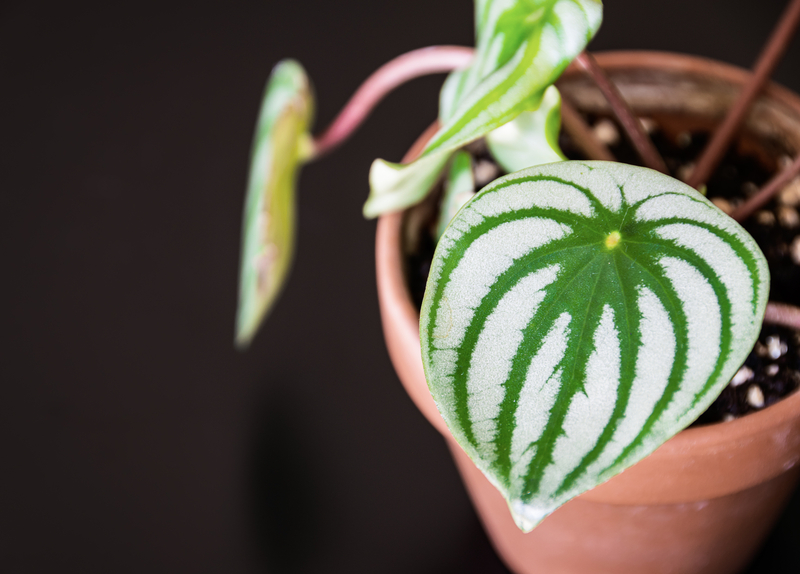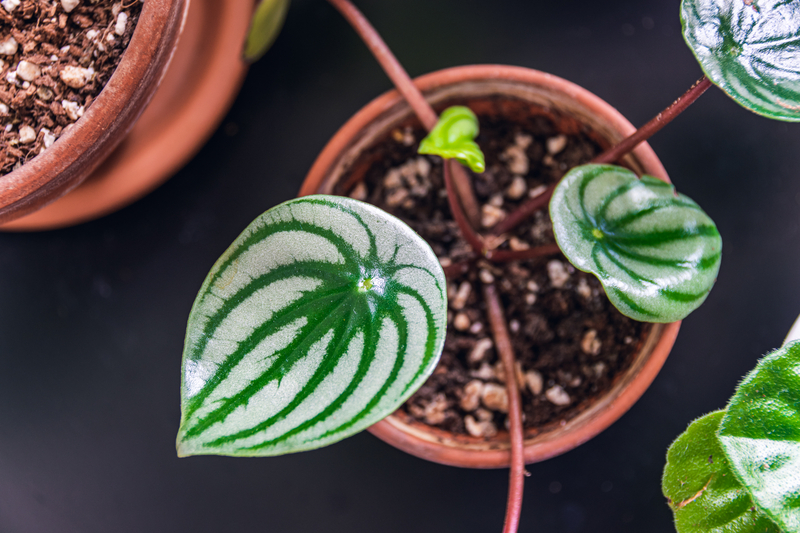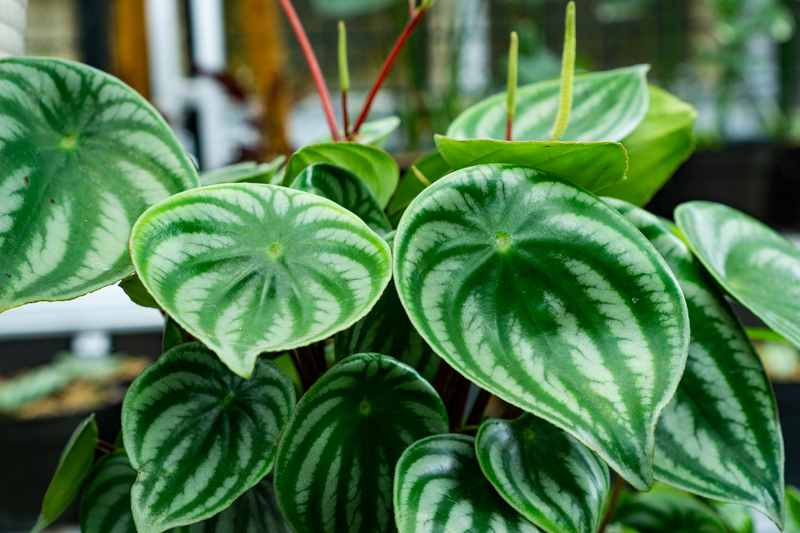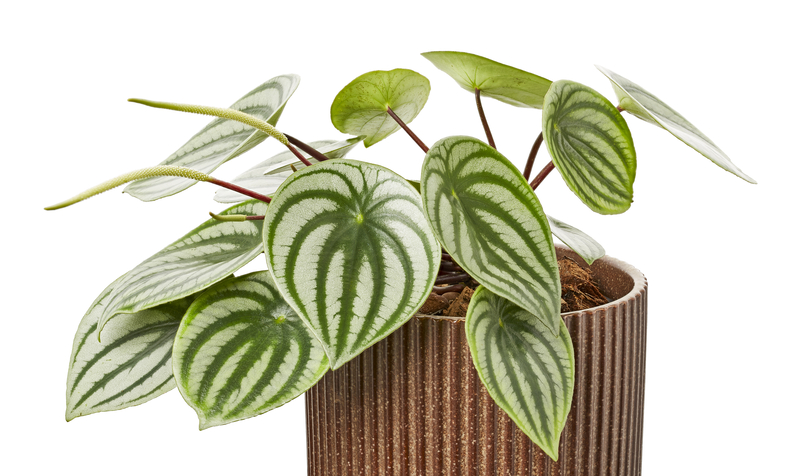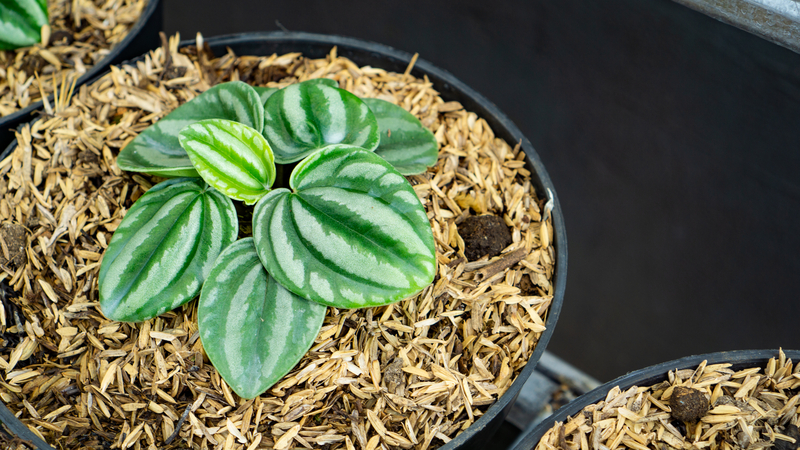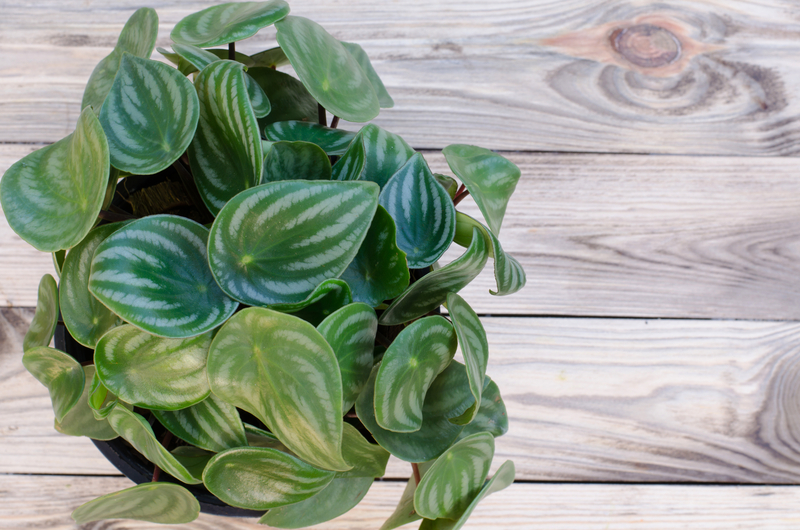The Watermelon Peperomia plant is well known for its similarities to the rind of a watermelon. It likes to grow in the rainforests of South America, such as the Amazon Rainforest. Here is how to care for a Watermelon Peperomia Plant.
Scientific Name
The Scientific Name for the Watermelon Peperomia is Peperomia Argyreia and is a part of the Peperomia genus of plants.
Other Names
- Watermelon Peperomia
- Watermelon Begonia
What Type of Soil Works for a Watermelon Peperomia Plant?
The type of soil you want to use for a Watermelon Peperomia plant is looking for a well-draining soil mix. You can get these via a soil mix in the store or mix perlite with some compost and peat moss to get the same results.
How Much Sunlight Will a Watermelon Peperomia Plant Need?
The Watermelon Peperomia plant will need a partially shaded spot near a windowsill to survive and grow without being exposed to too much sunlight. Somewhere like an East-facing window would be best, so that way the plant is getting indirect sunlight rather than direct sunlight.
What Temperature Works Best for a Watermelon Peperomia Plant?
The temperature you will want your plant to be is around 65-75 degrees Fahrenheit. You cannot go any lower than 50 degrees Fahrenheit, or the plant will die. Also, be careful about leaving this plant near a cold window or AC unit as that cold temperature can cause problems for the plant.
Does a Watermelon Peperomia plant Need Humidity?
Watermelon Peperomia plants need humidity to grow strong and healthy. The humidity level in your home should be around 50%. To reach this humidity percentage, you can mist the plant and put pebbles in the soil to encourage evaporation. Another tip is to pace this plant in a bathroom with a shower.
How Often Should You Water a Watermelon Peperomia Plant?
For a Watermelon Peperomia plant to survive, you need to water it around once to twice a week in the summer and once or twice every two to three weeks in the winter months. You should make sure to use room temperature water. Too cold, and it could kill the plant.
All of this will mainly depend on the moisture level and the type of soil you are using. To determine the plant’s moisture level, use a moisture gauge to tell the moisture level.
What is The Usual Size That a Watermelon Peperomia Plant Grows To?
Watermelon Peperomia plants tend to grow anywhere from six to twelve inches tall. However, it’s interesting to note that these plants can sometimes grow flowers indoors, five to ten inches long.
The Most Common Bug Types
Eventually, every plant must deal with bugs, and the Watermelon Peperomia is no different. The bugs that usually affect this plant are mainly mealybugs and common indoor pests like flies.
Using rubbing alcohol on a houseplant will help get rid of mealybugs.
What Are the Most Common Types of Diseases?
Yellow leaves can occur by two things: overwatering your plant and too many pests on the plant. An easy solution to having yellow leaves is to ensure that the soil dries before watering your plant again. Another solution is to eliminate any pests that are affecting your plant.
Brown leaves occur due to the environment that you put the plant in. A solution to this would be to figure out the exact environmental conditions that might be causing the leaves to turn this color and move it to a better one. For example, being near a cold window might be why this plant wilts.
Another issue that can affect your plant is curling leaves. Curling leaves occur by not watering your plant enough. You’ll need to water the plant more frequently or let the soil dry more before watering again to fix this.
Can You Propagate a Watermelon Peperomia Plant?
There are two types of ways to propagate a Watermelon Peperomia Plant. The first is by carefully dividing the roots and repotting into two separate pots. To do this, you’ll need to remove any offshoot roots around 1 inch from the main plant.
The second way to propagate it is by cutting the plant’s leaves. Cut the plant leaf in half horizontally and leave the plant on a moist paper towel when using this method. After doing this, put the leaf into a new pot with moist potting soil, and cover the pot in a plastic bag to trap moisture inside.
You will know you have succeeded when roots start to appear. Again, choose a pot with drainage holes so that you don’t accidentally have the soil absorb excess water from your plant.
Can You Repot a Watermelon Peperomia Plant?
Yes, you can repot a Watermelon Peperomia Plant. However, you should repot this when it becomes too big for its current pot. In that case, you should choose a pot that is one size bigger and repot during the spring.
Why are my Watermelon Peperomia Plant’s Leaves Drooping?
If you have issues with drooping peperomia leaves, the likely problem is that you are overwatering your plant. To fix this, you need to make sure that you water the plant less than you currently are. It varies from season to season, so make sure to water the plant depending on that. Another possible reason is that you are in a cold area of your house and will need to move the plant to a new location.
Conclusion: How to Take Care of a Watermelon Peperomia Plant
When it comes to indoor plants, The Watermelon Peperomia is a good choice for any household, but only when you have it grouped with other indoor plants. Otherwise, this plant is easy to grow indoors and worth the time and effort to produce.
Similar Posts:
Zebra Succulent Plant Care Tips
How to Get Rid of Mold on Plant Soil
String of Turtles Plant Care Tips

